Climbing and Mountaineering
Climbing is understood as climbing in natural terrains (on rock, ice, mixed terrain) or on artificial climbing walls. We distinguish sport climbing, in which the level of the objective risk is minimalized (bolted routes) and traditional climbing, which puts demands on both physical and mental side of individuals (sandstone climbing and climbing in mountains).
While in sport climbing the goal is the climbing movement itself and the climbing route, in mountaineering the main goal is reaching the summit and the way (free, technically) is the second. Disciplines which include climbing has gone through an interesting development. Earlier they all belonged under the term mountaineering, today we understand climbing in a wider context, including also gymnastics climbing and shining, and climbing on natural and artificial obstacles (Figure).
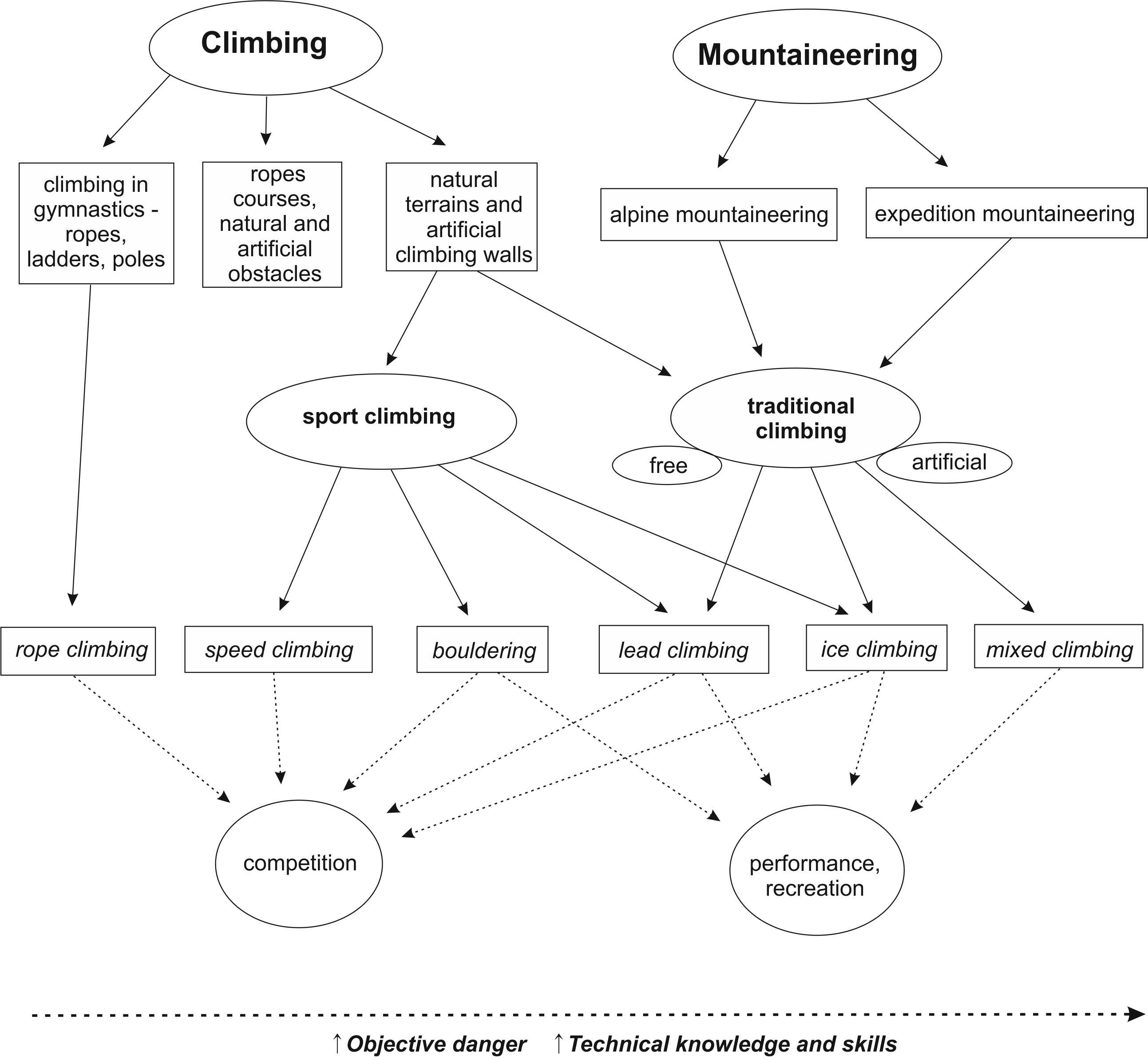
A recent possible view on climbing disciplines in the context of gymnastics climbing, sport climbing and mountaineering development.
Sport climbing
Sport climbing is climbing with set rules, the level of the objective risk is minimalized, and its sense is the movement itself. Rules include the style and classification of the route, local recommendations and restrictions. Sport climbing today include many activities: bouldering, climbing on artificial walls, climbing on bolted routes, competitive climbing. Competitions are organised in lead and speed climbing, in bouldering and ice-climbing.
Bouldering
Bouldering originally means climbing on big stones (boulders). It is one of the oldest forms of sport climbing. Today we understand bouldering as an activity realized in natural terrains or on artififial walls, in which a climber overcomes a short climbing problem of a different difficulty without a rope. The height should not exceed the border for a safe jump on ground (usually up to 3 metres). Bouldering has become recently very popular. It has become an individual competitive and non-competitive discipline. It is mainly used in training of difficulty climbing, but aslo as a means of introduction to climbing.
Climbing on artificial walls
Artificial walls started to be built by climbers for training purposes and by educational institutions for training technical skills. In late 1980s climbers started to compete on artificial walls and they have become even more popular since then. Climbing has become so a learning subject, sport discipline and a means of the educational influence. A climbing wall enables the whole year opening hours in a comfort environment, which brought climbing activities closer to everyone.
Climbing on fixed (bolted) routes
Rocks for sport climbing are fixed by bolts and stances, which make climbing routes safer. When keeping to basic rules of belaying there is no objective risk of danger. Falls can be longer than on artificial walls. Therefore, other skills are needed for climbing on rocks, which are not needed for climbing on artificial walls (abseiling, clipping running belays, etc.). The European centres for sport climbing are Spain, France and Italy. In the Czech Republic the biggest sport climbing areas are in the Czech and Moravian Karst, around the river Vltava and Ohře and in the Jeseníky Mountains.
Traditional climbing
This climbing requires special skills in setting running belays and stances and a certain technical experience of climbers. It is very demanding on the mental side. The European centres of traditional climbing are the Great Britain and German and Czech sandstone towers. Climbers use natural rock features, like cracks, edges, etc. for belaying. We find here routes which often require different climbing techniques (chimneys, cracks, walls, fiction climbing). Traditional climbing can be understood as a certain connection between sport climbing and mountaineering.
Mountaineering
Climbing mountains for a pleasure of the climb and reaching the summit was already described in renaissance. The main development starts at the end of 18th century and during 19th century. Mountaineering has always been connected with other scientific fields and human activity. Enlighteners connected climbs in the Alps with the scientific observation and helped to the development of biology, geology and physics. Modern mountaineering is connected with the glaciology, geomorphology, climatology, mountain medicine, high mountain training, etc.
Even if we state that the goal of mountaineering is climbing the mountain, we do that only to distinguish sport climbing from traditional climbing. Mountaineering is necessary to understand in a wider context as a multi-dimensional activity.
The following characteristics are typical for mountaineering:
Higher, the so called objective danger – a very significant influence of climate (sudden changes of weather), the changed compactness of rocks, etc.
Higher demands on orientation in terrain.
Multi-pitch climbing.
Longer access to rocks (often a demanding access and climb down).
Necessity to fix running devices.
Fixing stances.
Often there is necessary to build a bivouac on rock ledges or in walls on special hanging constructions.
Basics of climbing
Climbing belongs to activities, in which you need enough information and experience how to do it – both performance and recreation climbing – with the respect to maximal safety. Roots of climbing and the necessary theory were described in detail in the books Ropes courses, climbing walls and experiential education (Neuman, Vomáčko, & Vomáčková, 1999), Climbing on artificial walls (Vomáčko & Boštíková, 2003) and Let´s climb and shin (Baláš, Strejcová, & Vomáčko, 2008), in which there are many games and exercises described. Those who are more interested in this area, we refer to the above stated books. To teach bouldering P.E. teachers do not need any special licence. For climbing with a rope, abseiling and ascent on a rope you have to be an owner of a climbing instructor licence, which is issued by accredited institutions.
Training of climbing
The first steps are undertaken, mainly in children by a form of games and exercise when bouldering. More persons can climb together, we do not need belaying devices and climbing can be easily controlled. Bouldering is understood from this viewpoint as the most suitable form of introducing to climbing. The second step can be practicing the rope climbing, which requires learning basic skills of tying to a rope and belaying. Abseiling and ascent on a rope can finish the basic mini school of climbing.
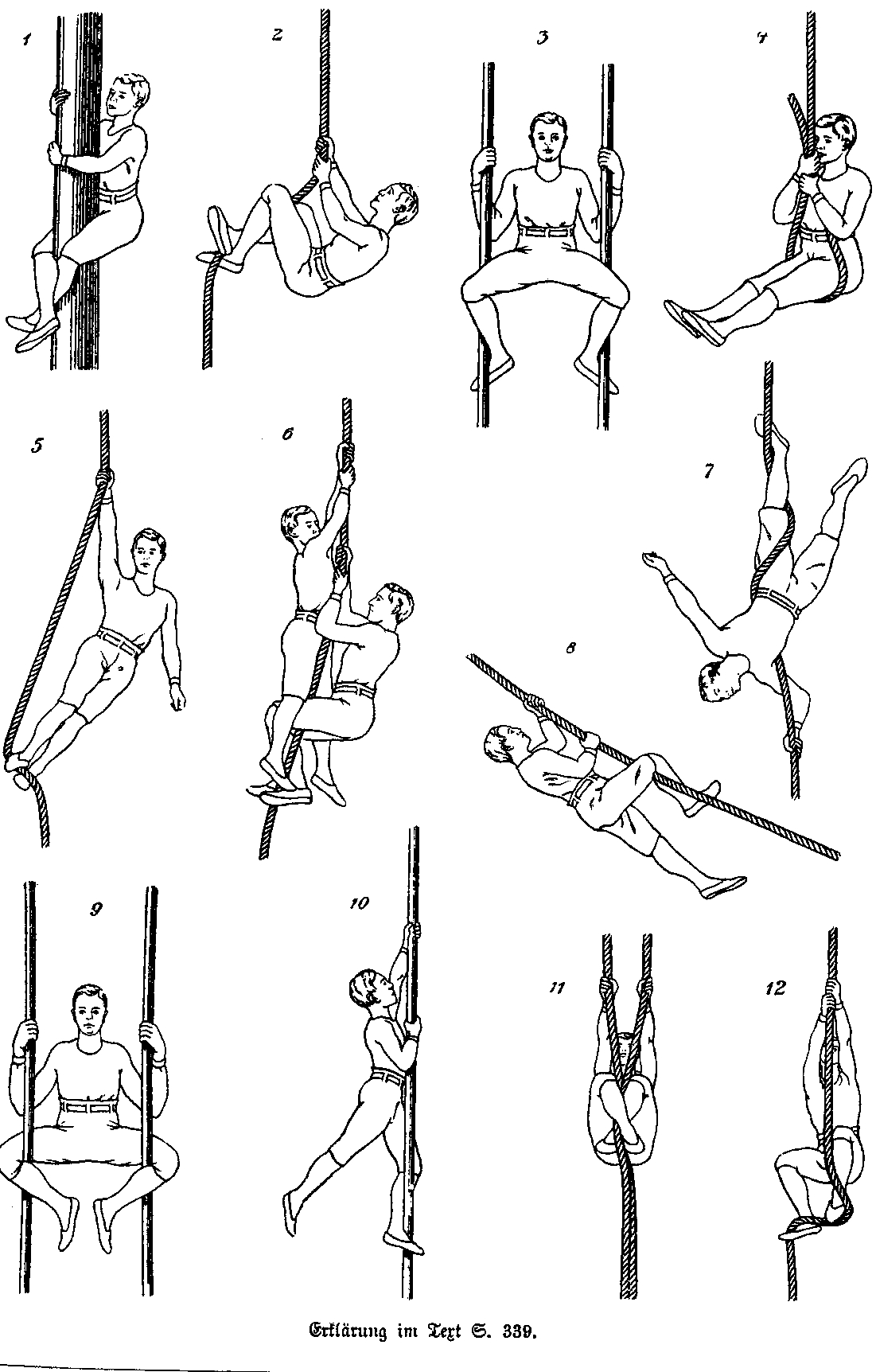 |
| Climbing on ropes and poles in Turners (Gasch, 1920) |
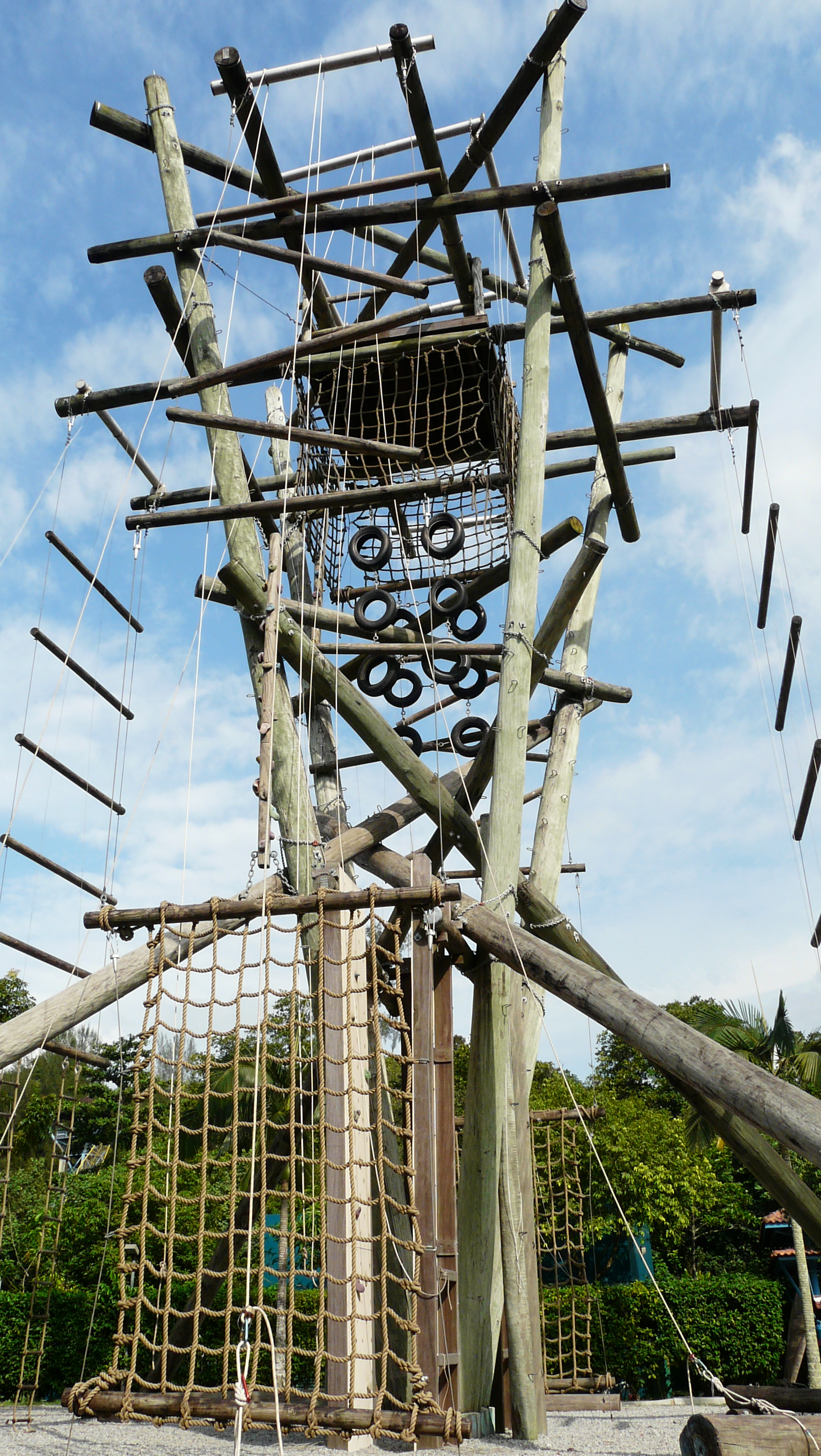 |
| Climbing tower in a ropes courses centre |
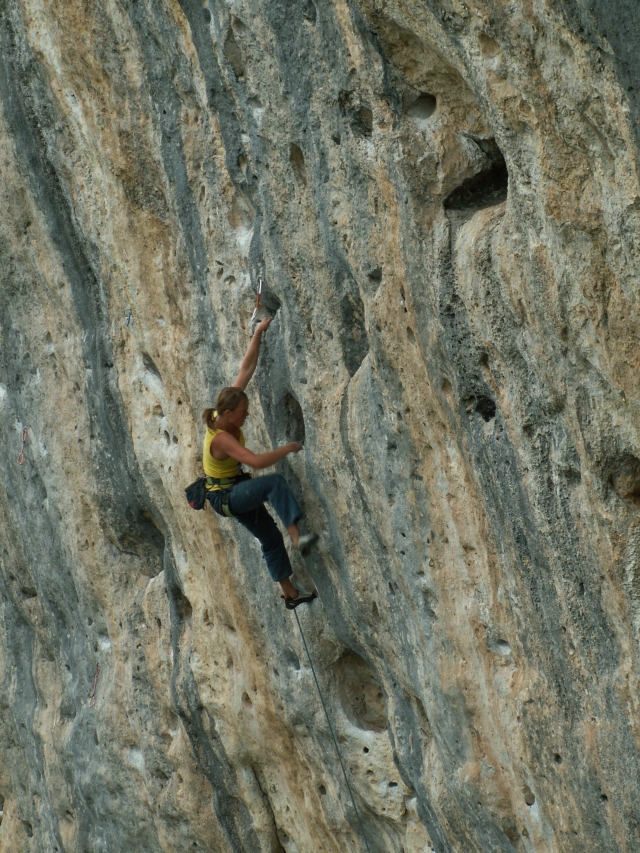 |
| The objective risk is low in sport climbing, the aim is the climbing movement itselfs |
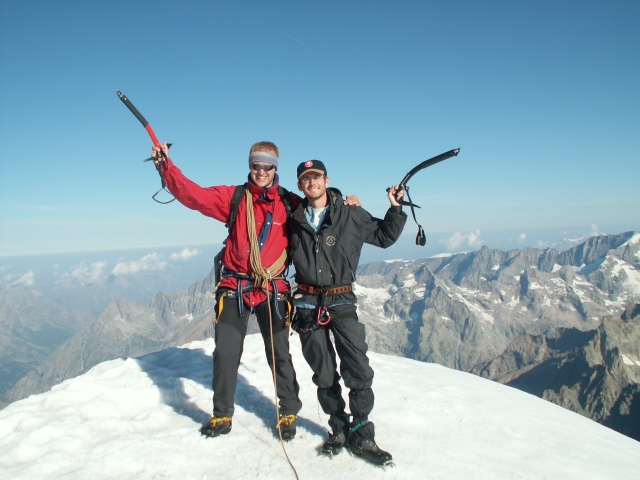 |
| In mountaineering the main goal is reaching the summit |
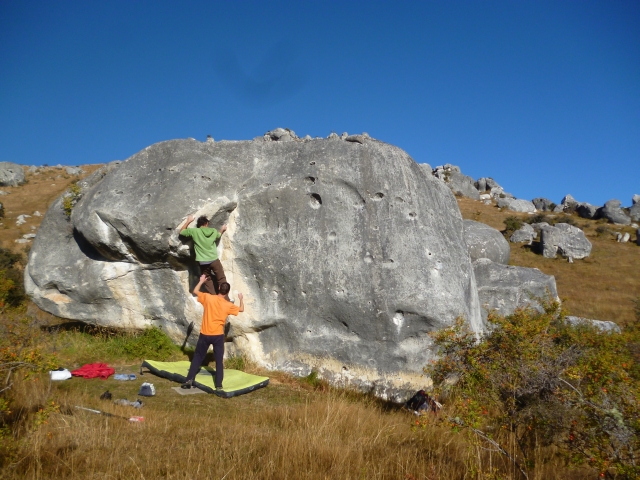 |
| Bouldering is climbing low over the ground |
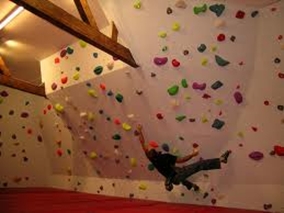 |
| Climbing on artificial walls is the most popular form of sport climbing |
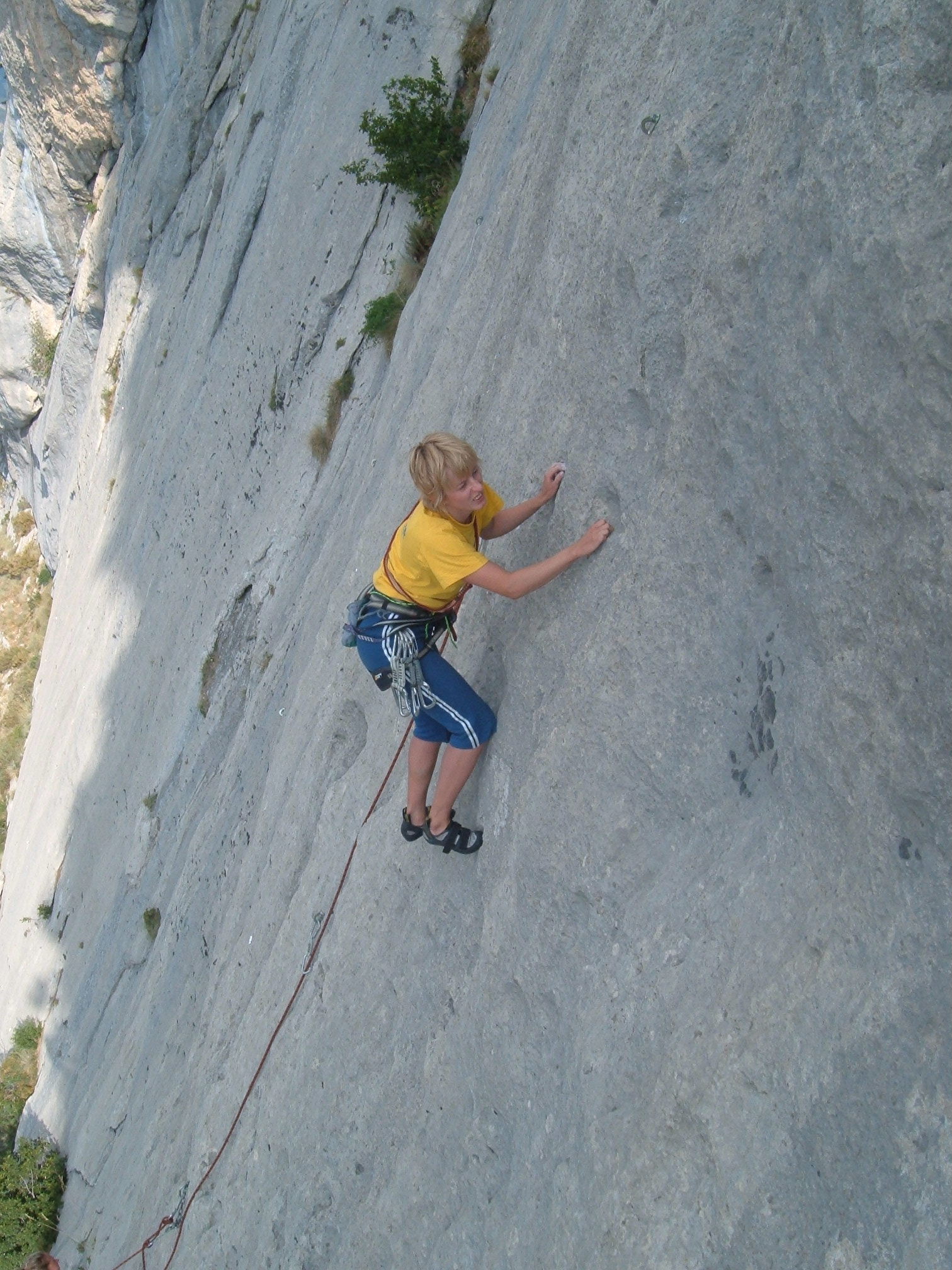 |
| Rock climbing is more complex than artificial wall climbs |
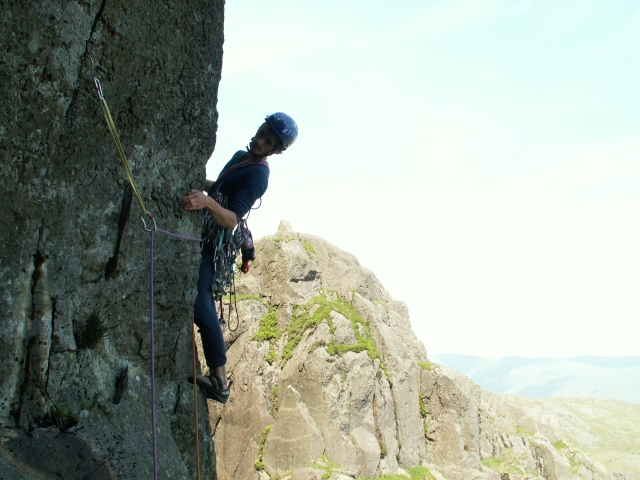 |
| In traditional climbing, you need to place your own protection |
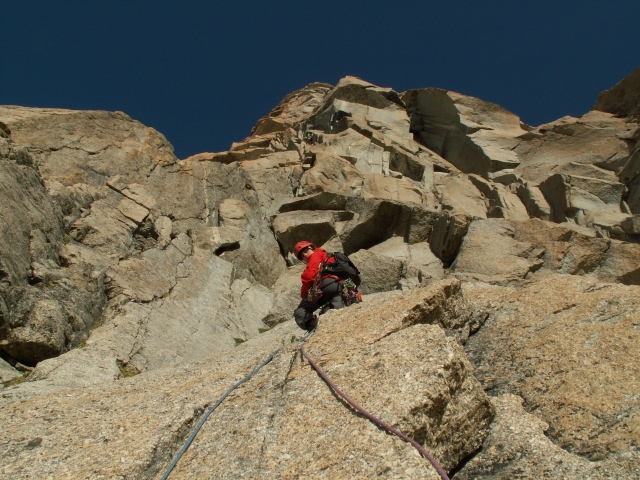 |
| Multi-pitch climbing is typical in mountaineering |
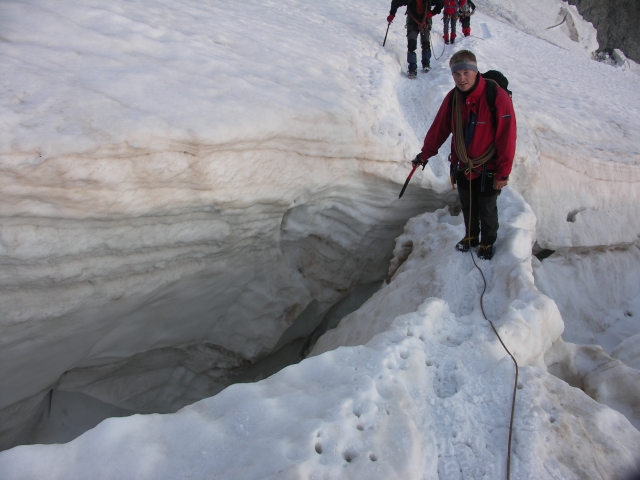 |
| Mountaineering involve access to rocks on glaciars |
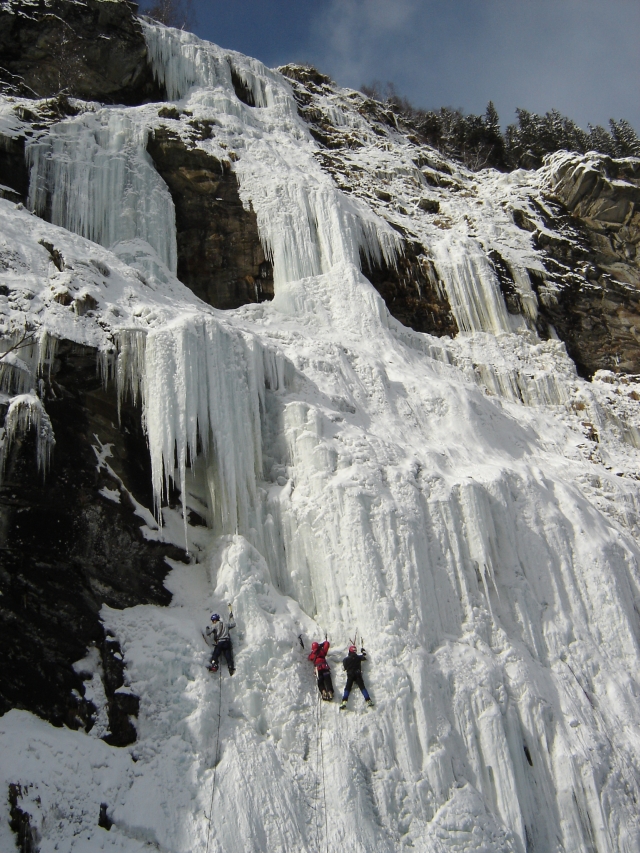 |
| Ice and mixed climbing |
